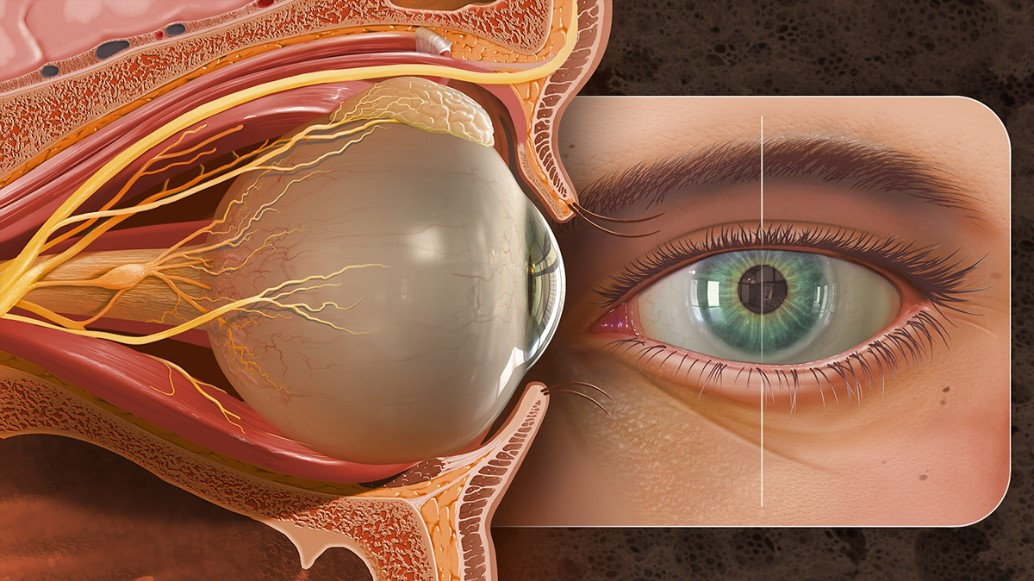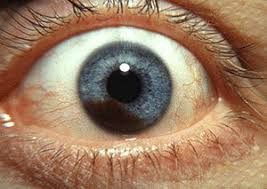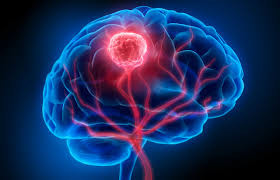Definisi
Anemia Fanconi adalah suatu kelainan bawaan lahir yang langka, di mana penyakit memengaruhi sumsum tulang dan banyak bagian lain di tubuh. Sumsum tulang adalah jaringan pada bagian tengah tulang yang memproduksi sel punca. Sel punca ini akan berkembang menjadi sel darah merah, sel darah putih dan keping darah. Pada anemia Fanconi, sumsum tulang tidak memproduksi sel darah yang sehat serta bisa menyebabkan kelainan fisik yang memengaruhi organ tubuh.
Setengah pasien anemia Fanconi didiagnosis sebelum berusia 10 tahun, sementara 10% pasien ditemukan saat sudah dewasa. Jenis anemia ini terjadi pada kedua jenis kelamin dalam proporsi yang sama dan ditemukan pada semua kelompok etnis. Anemia Fanconi adalah penyakit yang sangat langka terjadi. Penyakit ini ditemukan pada 1 dari 160.000 orang di seluruh dunia. Pada kebanyakan kasus, anemia Fanconi terdiagnosis saat masa kanak-kanak atau dewasa muda.
Kami memiliki artikel mengenai anemia yang bisa Anda baca di sini.
Penyebab
Penyakit ini diturunkan oleh orang tua pada anaknya. Anemia Fanconi adalah kelainan genetik yang disebabkan oleh suatu mutasi atau perubahan pada kode genetik dalam satu kelompok gen. Seseorang memiliki sekitar 23 gen anemia Fanconi (AF), dan penyakit bisa terjadi bila ada mutasi pada minimal 18 gen. Gen-gen tersebut berperan untuk melindungi tubuh dari kerusakan DNA yang terjadi selama hidup Anda.
Ketika gen AF bermutasi, protein yang biasanya memperbaiki kerusakan DNA tidak bekerja dengan benar dan tidak dapat memperbaiki DNA yang rusak. Hal ini menyebabkan:
- Kerusakan DNA terus terjadi dan menyebabkan pertumbuhan sel menjadi abnormal atau kematian sel.
- Kematian sel yang tidak normal dapat menyebabkan suatu abnormalitas fisik serta penurunan jumlah sel darah yang dibutuhkan tubuh untuk menjalankan fungsinya.
- Pertumbuhan sel abnormal dapat menyebabkan suatu kanker darah leukemia (LMA) atau jenis kanker lainnya.
Faktor Risiko
Pada sebagian besar kasus anemia Fanconi, kedua orang tua yang menjadi "pembawa" mutasi gen harus memiliki perubahan pada gen AF. Penderita biasanya mendapat salinan mutasi gen yang abnormal dari masing-masing orang tuanya. Jika anak mewarisi gen AF yang normal dan salinan gen yang bermutasi, anak tersebut akan menjadi "pembawa" penyakit untuk keturunannya, namun mereka sendiri tidak memiliki gejala penyakit. Risiko terjadinya penyakit ini sama pada laki-laki dan perempuan, tidak ada kecenderungan tertentu pada suatu jenis kelamin.
Gejala
Anemia Fanconi dapat menyebabkan beragam gejala dengan tingkat keparahan yang berbeda pada setiap pasiennya. Penyakit ini bisa ditemukan sejak lahir, saat masih usia anak atau ketika pasien memasuki usia dewasa. Gejalanya meliputi berbagai kelainan fisik, kegagalan sumsum tulang, dan peningkatan risiko seseorang mengalami kanker atau keganasan.
Kelainan fisik bisa ditemukan sejak kanak-kanak walaupun pada beberapa kasus langka baru ditemukan ketika dewasa. Sekitar 60% penderita anemia Fanconi terlahir dengan minimal satu kelainan fisik. Selain itu, masalah kegagalan sumsum tulang yang berkaitan dengan produksi darah sering muncul saat anak berusia 6-8 tahun. Risiko peningkatan terjadinya kanker bisa membuat pasien mengalami kanker pada usia yang lebih muda.
Gejala yang Bisa Ditemukan saat Bayi
Perlu diketahui beberapa bayi yang terlahir dengan anemia Fanconi bisa tidak memiliki gejala yang tampak jelas, sehingga mereka baru didiagnosis di kemudian hari. Gejala dan tampilan klinis di bawah ini bisa ditemukan pada 75% penderita anemia Fanconi ketika bayi, yaitu:
- Berat badan lahir rendah dan perawakan pendek.
- Tanda lahir berwarna gelap atau terang yang terlihat tidak normal.
- Kelainan bentuk tulang, bayi paling sering ditemukan tidak memiliki tulang ibu jari atau tulang radius (lengan bawah).
- Memiliki mata atau kepala yang berukuran kecil.
- Ditemukan gangguan pencernaan.
- Kelainan organ ginjal, saluran kemih, usus besar, atau jantung.
- Bayi laki-laki bisa memiliki organ reproduksi yang kecil.
Gejala yang Bisa Ditemukan saat Kanak-Kanak
Ketika anak berusia 6-8 tahun, pasien anemia Fanconi bisa mengalami kegagalan sumsum tulang yang dapat memburuk seiring berjalannya waktu. Kegagalan ini menyebabkan produksi sel darah merah, sel darah putih dan keping darah berkurang. Hal tersebut akan menyebabkan timbulnya keluhan seperti:
- Kelelahan dalam melakukan aktivitas sehari-hari yang tidak jelas sebabnya
- Warna kulit pucat.
- Sering mengalami infeksi.
- Mudah mimisan, perdarahan di gusi atau memar di tubuh.
- Terdapat darah di urine atau tinja.
- Gagal tumbuh atau mengalami masalah pertumbuhan.
Gejala yang Bisa Ditemukan saat Dewasa Muda
Beberapa pasien anemia Fanconi baru mengalami gejala saat sudah beranjak dewasa. Mereka bisa mengalami peningkatan risiko kanker.
Diagnosis
Umumnya dokter menemukan pasien memiliki anemia Fanconi ketika sedang memeriksa atau mengobati kondisi medis yang berkaitan dengan penyakit tersebut, seperti kanker, kegagalan sumsum tulang yang progresif, atau karena kelainan bentuk tubuh.
Dokter akan bertanya mengenai keluhan dan gejala yang dialami pasien pada pasien atau orang tuanya. Riwayat kesehatan dan penyakit pasien, riwayat penyakit pada keluarga dan riwayat pengobatan yang pernah dijalani juga bisa ditanyakan. Ketika dokter merasa perlu dilakukan pemeriksaan lebih lanjut, dokter dapat menyarankan pemeriksaan penunjang berikut, yang meliputi:
- Pemeriksaan darah lengkap untuk mengevaluasi kesehatan dan aktivitas sel darah.
- Hitung retikulosit untuk mengukur kadar sel darah merah imatur (retikulosit) dalam sumsum tulang Anda, bermanfaat untuk memeriksa apakah sumsum tulang memproduksi sel darah merah sehat dalam jumlah yang cukup.
- Panel metabolik dasar, berperan untuk memberikan informasi mengenai keseimbangan kimia dan metabolisme di tubuh.
- Biopsi sumsum tulang yang dilakukan dengan mengambil sampel sumsum tulang.
- Pemeriksaan pencitraan seperti USG atau MRI.
Beberapa pemeriksaan genetik yang dapat digunakan dokter meliputi:
- Chromosome breakage test: menggunakan zat kimia tertentu untuk melihat bagaimana kromosom dalam darah dan sel kulit bereaksi.
- Skrining genetik mencari gen spesifik untuk melihat apakah terdapat suatu kelainan yang menyebabkan anemia Fanconi.
Tata Laksana
Umumnya, pengobatan difokuskan untuk mengontrol kelainan darah dan gangguan medis yang disebabkan oleh anemia Fanconi. Pengobatan dapat meliputi:
- Transfusi darah untuk memberikan sel darah yang kurang pada pasien.
- Transplantasi sumsum tulang bisa direkomendasikan untuk menangani leukemia atau kegagalan sumsum tulang.
- Terapi androgen untuk menstimulasi produksi sel darah merah.
- Pemberian faktor pertumbuhan sintetis untuk menstimulasi sumsum tulang agar bisa memproduksi lebih banyak sel darah merah dan sel darah putih.
- Prosedur operasi dapat dilakukan untuk memperbaiki kelainan bentuk fisik atau kerusakan organ.
- Pengobatan kanker atau keganasan.
Pasien akan memerlukan pemeriksaan dan pengobatan jangka panjang secara rutin. Mereka bisa melakukan pemeriksaan darah dan sumsum tulang setiap tahun untuk memonitor kondisinya. Pemeriksaan pada organ vital seperti ginjal dan jantung juga dapat dilakukan.
Komplikasi
Pada pasien anemia Fanconi, sumsum tulang mengalami gangguan untuk memproduksi sel darah merah, sel darah putih dan keping darah yang sehat. Mereka juga mengalami peningkatan risiko kanker, seperti:
- Leukemia myeloid akut, suatu jenis kanker darah.
- Kanker kulit.
- Kanker kepala dan leher.
- Kanker pada bagian tubuh lainnya.
Anemia Fanconi juga menyebabkan abnormalitas fisik yang dapat memengaruhi organ dan penampilan seseorang.
Pencegahan
Anemia Fanconi adalah kelainan bawaan lahir. Hal ini berarti Anda tidak dapat menurunkan risiko Anda untuk terkena anemia Fanconi. Jika Anda memiliki riwayat keluarga dengan anemia Fanconi, Anda dapat menjalani pemeriksaan genetik untuk mencari tahu apakah Anda membawa mutasi gen AF. Tidak semua orang yang membawa mutasi gen AF memiliki gejala, dan tidak semua orang yang membawa mutasi gen tersebut akan menurunkannya ke anaknya. Pemeriksaan genetik akan membantu Anda memahami situasi Anda secara lengkap.
Kapan Harus ke Dokter?
Jika anak Anda mengalami gejala anemia Fanconi, sebaiknya Anda berkonsultasi ke dokter. Dokter akan melakukan evulasi untuk menentukan penyebab gejala yang anak Anda alami.
Mau tahu informasi seputar penyakit lainnya? Cek di sini, ya!
- dr Hanifa Rahma
Fanconi anemia: What it is, symptoms, causes & treatment (2022) Cleveland Clinic. Available at: https://my.clevelandclinic.org/health/diseases/14473-fanconi-anemia-fa (Accessed: March 27, 2023).
Fanconi anemia (2021) Cincinnati Childrens. Available at: https://www.cincinnatichildrens.org/health/f/fanconi-anemia (Accessed: March 27, 2023).
Fanconi anemia - symptoms, causes, treatment: Nord (2020) National Organization for Rare Disorders. Available at: https://rarediseases.org/rare-diseases/fanconi-anemia/ (Accessed: March 27, 2023).












